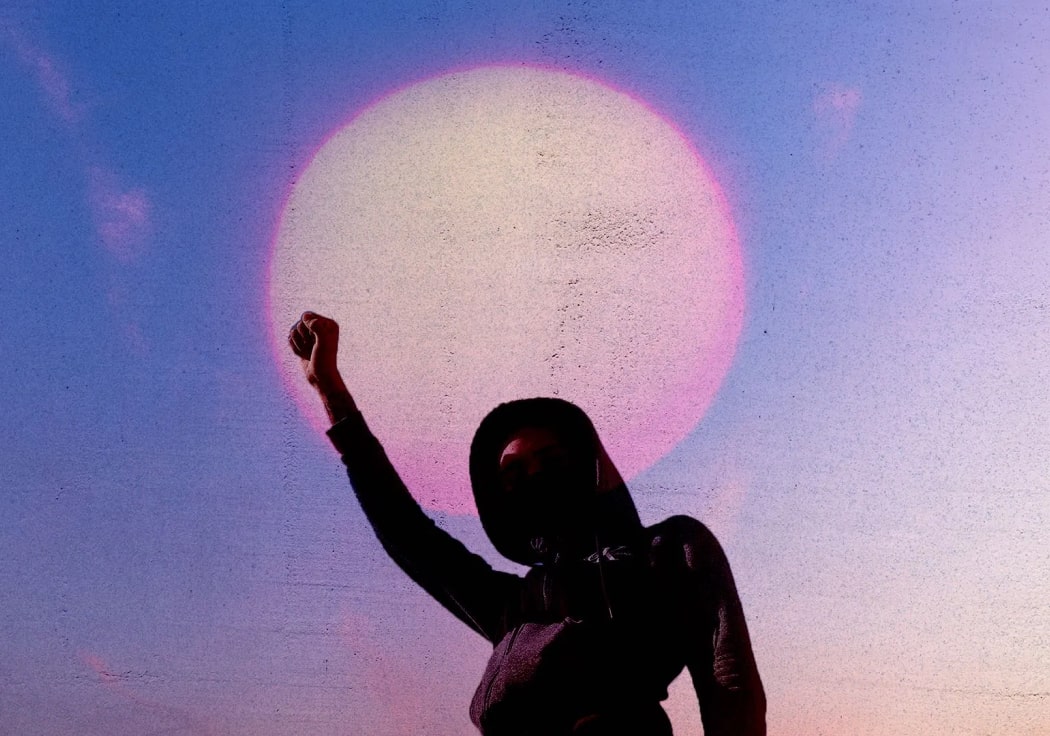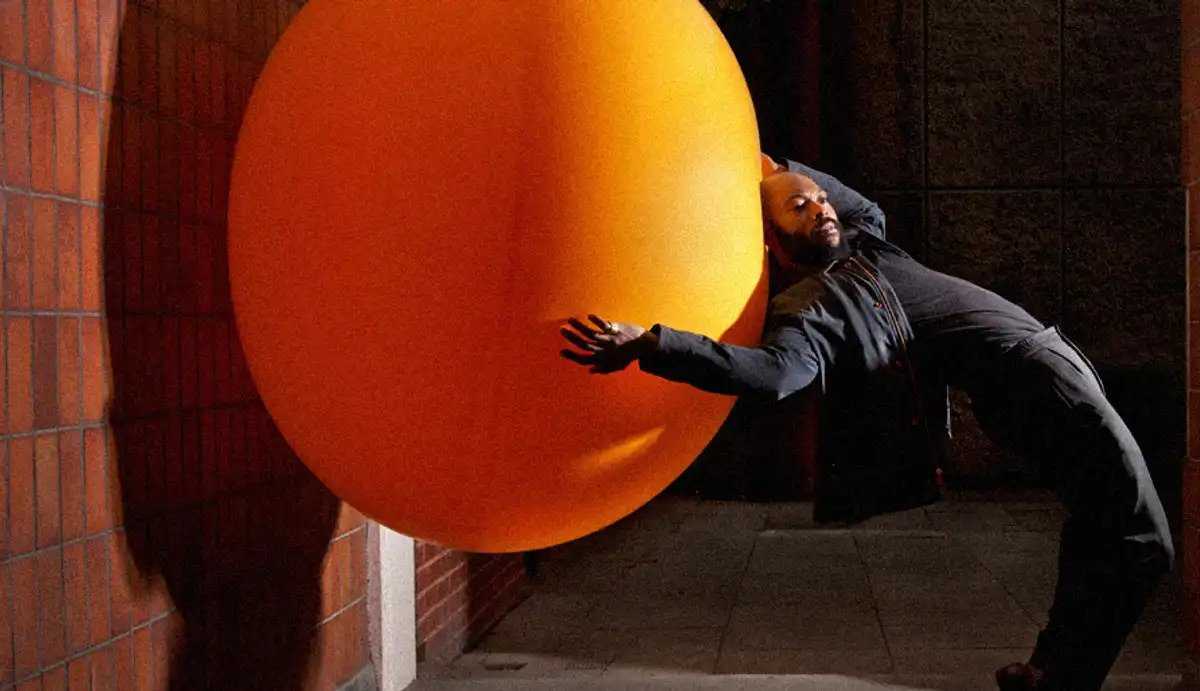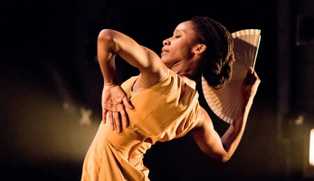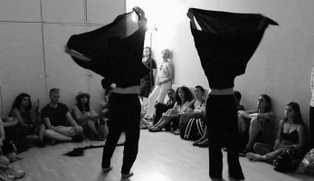After a sold-out extended run at the Bush Theatre earlier this year, Kene’s play Misty is currently on at the Trafalgar Studios. A unique melding of original music, performance art, traditional theatre, physical theatre, and many instances of breaking the fourth wall, Misty tells the interweaving stories of two black men in London, exploding convention in a way that only a truly modern approach to theatre-making can. It is unlike any piece of theatre I have seen before.
“Misty is the first time that I have let the subject matter inform the structure of a play,” Kene told me during a phone conversation in late August. “Normally it’s the other way around: I’ll have a story, I’ll have some characters, and I’ll fit it into a three act structure, just kind of shoehorn it in. With Misty, I found something I felt strongly about, and then I let the feelings and experiences inform the structure. I don’t really care if I write a four hour play, I just want to let it be honest.”Kene takes a brief pause.
“I’m quite glad I didn’t write a four hour play. That might have bit a bit much. Who likes sitting through a four hour play?”
Perhaps no one wants to sit through a four hour play, but many of us will happily attend any production that features Arinzé Kene. He has been a working actor for almost a decade now, most recently finishing up his spellbinding performance in the West End transfer of Girl in the North Country, a musical play using the songs of Bob Dylan. Kene has also been writing for many years; his plays include good dog, which tiata fahodzi theatre company toured throughout the UK in 2017, God’s Property, a co-production with Talawa, which ran at Soho Theatre in 2013, and Little Baby Jesus, directed by Che Walker at the Oval House Theatre, where his play Estate Walls was also produced.As with most of his work, Misty focuses on urban populations. The play is acutely aware of the ways inner city, black, male stereotypes function as a kind of erasure, and it acknowledges this erasure as part of a larger, more complicated social structure.
“I play two characters. One is the blood cell/virus who is experiencing gentrification; he feels backed into a corner, it drives him mad. He is trying to deal with it in the he feels is best, which is actually to buck against it. The other character I play is Arinze, me, and [the audience] watches my challenges as a creative. As the play unfolds, those two characters begin to interweave and to crossover and we start to see there are parallels and similarities between their two journeys. I do think the chokehold of gentrification has an effect on art – the two are connected.”
Misty explores what it means to be a black man with a story, your own or one thrust upon you, in a rapidly changing London.
“I do have that battle between my freedom as an artist and what I’m allowed to kind of…”
He stops for a moment and chuckles.
“Allowed, you know. Even just using those two words ‘allowed to’… who am I trying to get permission from? But even that, those words do exist in my brain, [this need for] permission to create.”
Kene’s work is personal; he writes about characters who have migrated, about inner city living, about experiences that resonate with his own as a Lagos-born, Hackney-raised black man. These kinds of stories, of dissonant cultures, overlapping identities, and melting pot communities, are inherently dynamic.
“London is incredibly colourful. You [walk down the street and you] hear loads of different accents and languages, and see different skin tones. You see neon lighting and grey concrete and all these things juxtaposed and together. Sometimes I’ll walk into a theatre and all I see is this kind of screen of like, I don’t know… it’s like a screen has been placed in front of your eyes and it makes everything a similar tone.”
A lot less dynamic than the London we actually live in?
“There you go. I want my work to jump out at you in the same way Oxford Street jumps out. In the same way the kid on his bike crosses your path and it feels like a hazard and perception test.”It is unsurprising, then, and perhaps overdue, that Kene’s latest work has him completely at the helm and bursting out of theatre’s preordained seams. Misty is brash and bold. It is governed by its own set of rules. It is reminiscent of a London many of us know.
“This is a play that’s set now. It’s meant to feel current and urgent. There are certain approaches that we have to theatre and to writing that were set in place hundreds of years ago; I think those are great for certain plays but not for all of them. Without even thinking, I was applying them to my work, and now I’m just thinking that I can be more free with creating.”
Those approaches still define much of what we see in large theatres across London today. Thinking about what is being programmed, and by whom, I wondered whether the process of bringing Misty to life was a difficult one.
“There were a few workshops that we did where not everybody loved it. That was expected because it’s not… it’s unorthodox. While I’m getting more and more of my work made, that might be one of the challenges that I face, and I’m okay with that, because I’m trying to do something new here. There will be people who are more used to the ways that things have been happening, and they will probably try to encourage me to make something that they’ve seen before.”
This is to be expected. As the dismal statistic at the opening of this piece demonstrates, talented black playwrights have a hard enough time achieving parity with their white counterparts, so it cannot be a surprise that they may receive pushback as they develop their work. But Kene’s determination is important. While no black artist can or should take on the task of correcting centuries of sidelining and stereotyping, it is imperative that we have creatives, from programmers to actors, complicating the badly drawn caricatures we all grew up consuming.
“The only time I saw black people on my television screen was when they were engaged in some sort of criminal activity, and that was both in fictional drama and on the news. You grow up with this narrative, a narrative you keep seeing over and over, and you wonder whether it’s true.”
So much of how we understand ourselves is based on what is presented to us about us.
“Story is a tool and it’s everywhere. As a young man, having that thrust upon me against my will… there were times that I got confused and I thought that I was something the media made me out to be. As I’ve gotten older, it’s something that I have to actively oppose. It’s about reading the right work, not engaging in those negative representations of people who look like me, and also not feeding into them, either. The unifying factor that connects my work is that I play against [those representations], and sometimes I comment on [them, too].”
There have been many big proclamations from the theatre industry of late. Discussions on gender, race, and class, on who has access and which voices are being nurtured. I can’t help but wonder whether theatre is changing? Is it becoming a space where we can more freely explore our stories?
“I don’t know, if I’m honest. I actually don’t know. It’s been a very long time since a play written by another black playwright has come to the West End. You have Misty and then right on its heels you have Nine Night by Natasha Gordon. You could read into that and say that something is happening, but I don’t know. My hope is that theatre does open its heart and [does become] more accepting of everybody’s efforts and everybody’s art. My dream is to help make that happen. And there are also a lot of other creatives who have that mission and they’re cracking on. But I can’t tell you for sure that things are getting better.”
Whatever the future is for black voices in theatre, Kene is keeping busy, on and off the stage. Later this autumn will see the release of Been So Long, a musical film that has been dubbed London’s La La Land, in which Kene stars alongside Michaela Coel.“It’s exciting. I enjoyed watching it very much, so I can’t wait for people to see that.”What else we should expect to see Kene in?
I’ve also got Informer coming out in Autumn, it’s a six-parter for BBC. Then a comedy series called Flack, in which I play Anna Paquin’s boyfriend, a lovely nurse called Sam, is coming out next year. There’s Longsong, another BBC NBCUniversal drama that comes out next year. And I’m currently filming How To Build A Girl, Caitlin Moran’s film, adapted from her novel of the same name. So lots of screen work. I’ve not seen any of these ones, but I’m quite excited about writing for screen as well.
Arinzé Kene won’t be slowing down anytime soon, and thankfully so. The energy of Misty is rippling through so many communities, and my hope is that it marks a change in the creative space and license given to Black British artists.
I have one last question. As Kene moves on from the success of Misty to new things, as he continues to tell stories for the stage and the screen, how will he grapple with that sense of restriction, that impulse to believe we require permission before we create the work we are inevitably meant to create?
“You are always going to have obstacles. Always. That’s life. I don’t expect there to suddenly be a day where everybody just goes ‘yeah, go for it, here’s the money’ in response to the kind of work that I want to make. In fact, I’d get a bit suspicious about the journey if [that was the case]. We have to embrace those obstacles and take responsibility for how we respond to them. I’m not feeling any right now, and that’s just because I’m in this weird creative bubble. As soon as I start getting notes again from people… I’m sure it’ll be interesting. It always is.”
Catch Misty at Trafalgar Studios, London from 8 September – 20 October 2018.




